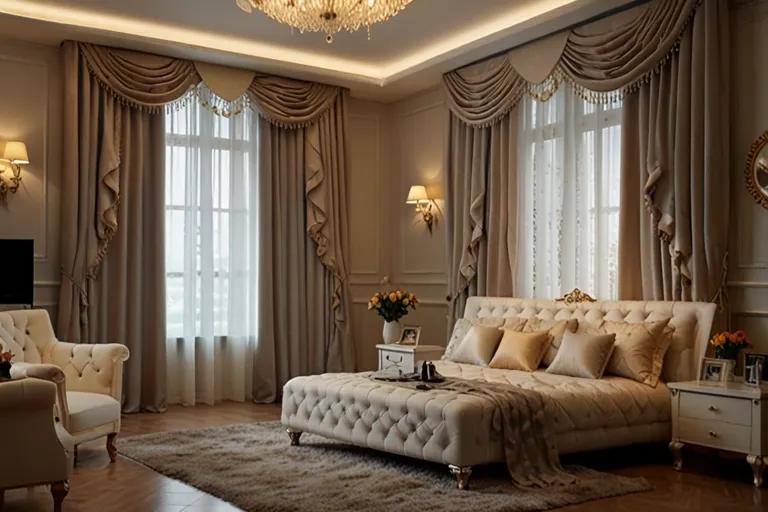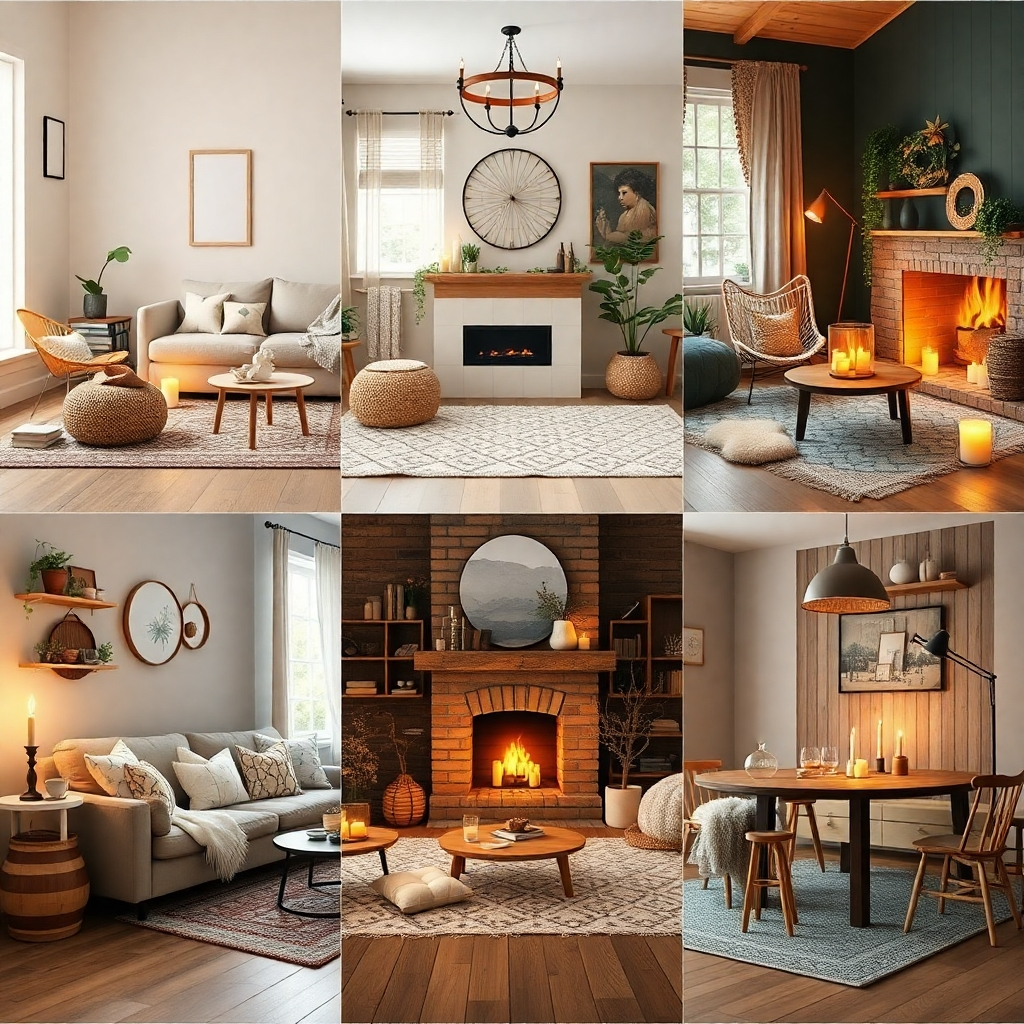
Transforming a living room into a comfortable and inviting space is essential for any home. Exploring fresh decor ideas can help create a space that reflects personal style while maximizing functionality. From color choices to furniture arrangements, there are endless ways to enhance the living room’s aesthetic and atmosphere. Let’s explore the Living Room Decor Ideas in detail.
In this blog post, readers will discover a variety of decor ideas ranging from modern to classic styles. Simple changes can make a big impact, whether it’s through selecting the right accessories or choosing a cohesive theme. Engaging with these tips can inspire anyone to elevate their living room to new heights.
Key Takeaways of Living Room Decor Ideas
- A harmonious color scheme sets the tone for the living room.
- Accessories can bring a personal touch to the space.
- Defining a theme helps guide decor choices and arrangements.
Fundamentals of Living Room Aesthetics
Creating an appealing living room requires attention to color, furniture, and layout. Each element plays a vital role in shaping the overall feel of the space.
Choosing a Color Palette
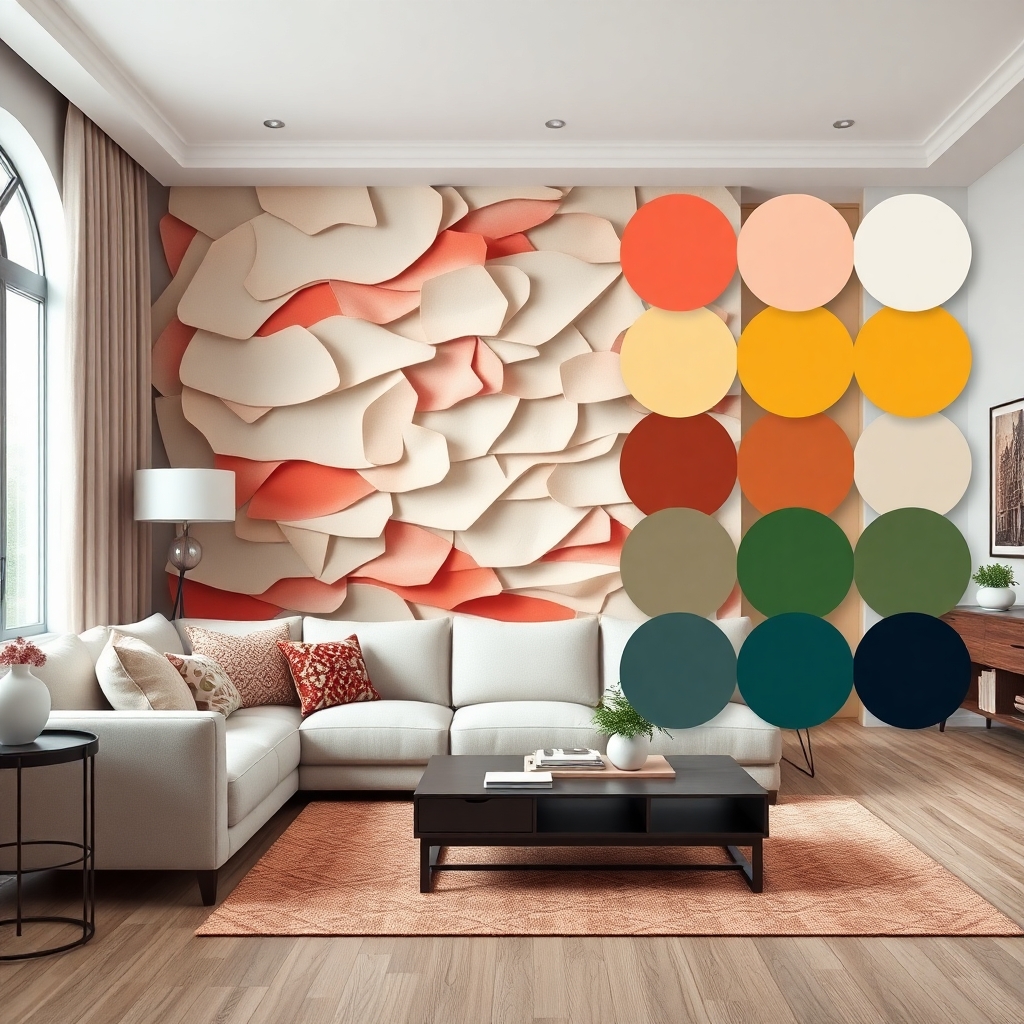
A color palette sets the tone for a living room. Consider using a mix of three to five complementary colors. This combination can include one main color, several accents, and a neutral.
Tips for Choosing Colors:
- Main Color: Use this for larger areas like walls. Soft blues or warm beiges work well.
- Accent Colors: Choose brighter shades for pillows or artwork. This adds character without overwhelming the room.
- Neutrals: Use colors like gray or white for furniture to balance vibrant shades.
Testing paint samples on walls can help visualize the final look before making permanent decisions.
Selecting the Right Furniture
Furniture defines the living room’s comfort and style. Selecting pieces that match the desired aesthetic is crucial.
Key Considerations:
- Style: Traditional, modern, or a mix? Choose furniture that aligns with the overall theme.
- Size: Ensure that furniture fits the space. A large sofa in a small room can feel cramped.
- Functionality: Consider furniture with added storage or dual purposes, like ottomans that can store items.
Prioritize quality to ensure longevity. Look for durable materials and well-built pieces that offer support.
Floor Planning for Flow and Functionality
Proper floor planning enhances the living room’s usability. An effective layout encourages easy movement and interaction.
Planning Steps:
- Identify Focal Points: Position furniture around a main feature, like a fireplace or TV.
- Space Between Pieces: Leave enough space for walking. Aim for two to three feet of clearance between chairs and tables.
- Zone Creation: Use rugs or furniture arrangements to define areas for conversation or entertainment.
A thoughtful layout fosters a welcoming atmosphere and optimizes the space’s potential.
Styling Themes and Inspiration
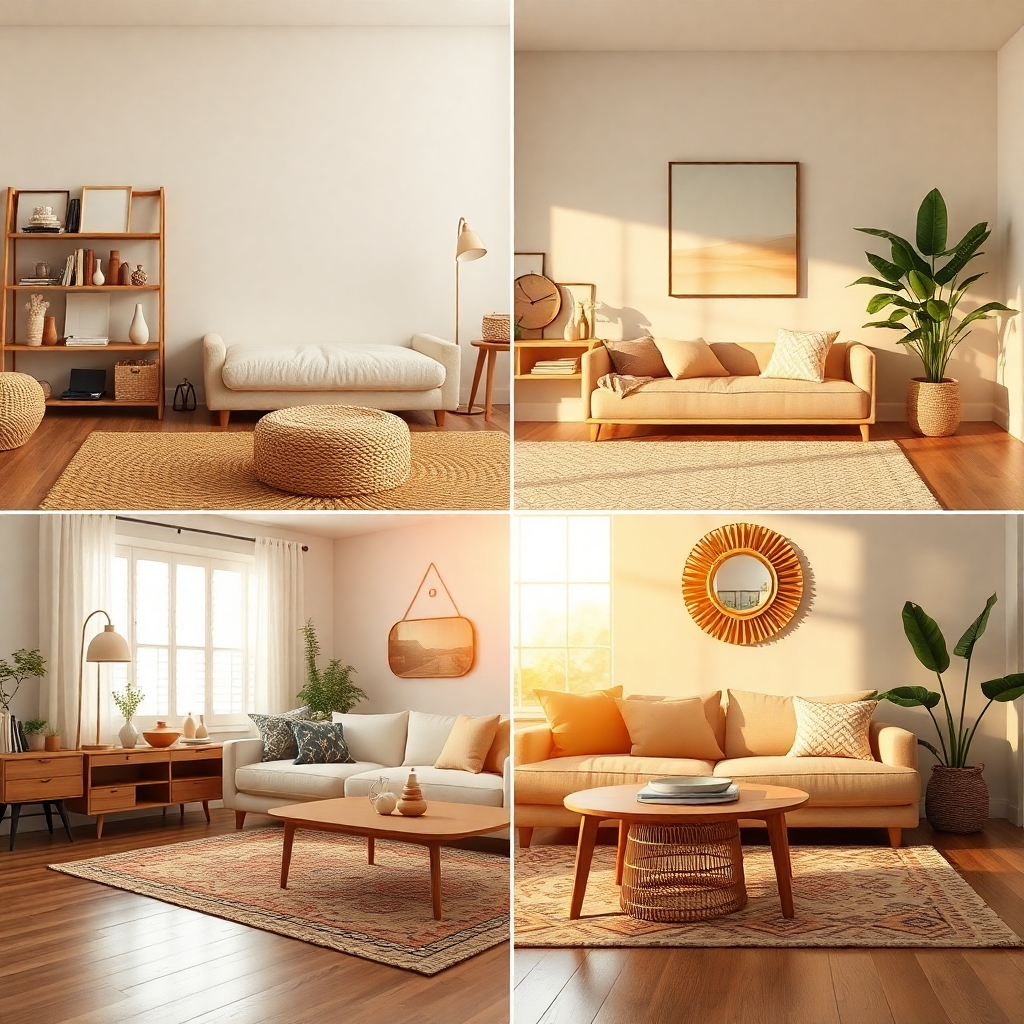
Choosing a styling theme can make a big difference in a living room’s look and feel. Different styles can create unique atmospheres and reflect personal tastes. Here are three popular themes to consider.
Modern Minimalism
Modern minimalism focuses on simplicity and functionality. This style uses a limited color palette, often featuring neutral shades like white, gray, and black.
Furniture tends to be sleek and without excessive ornamentation. Think clean lines and open spaces to create a streamlined look.
Incorporating elements like a low-profile sofa, geometric coffee tables, and wall art with bold shapes can enhance this style. Accessories should be minimal, with a few striking pieces rather than clutter.
Rustic Charm
Rustic charm brings warmth and coziness to a living room. It often highlights natural materials like wood and stone. The color scheme usually includes earthy tones, such as browns, greens, and soft whites.
Unique features like exposed beams, reclaimed wood furniture, and vintage accessories add character. Large, comfy sofas with textured fabrics can make the space inviting.
Decorative items like handmade pottery, woven blankets, and botanical elements enhance the rustic feel. The aim is to create a welcoming environment that connects to nature.
Eclectic Vibes
Eclectic vibes allow for a mix of styles and influences. This approach is all about creativity and personal expression. Bright colors, bold patterns, and different textures make the room visually interesting.
Mixing furniture from various eras can give the space a unique flair. For example, pairing a vintage armchair with a modern coffee table creates contrast.
Art plays a big role in this theme. A gallery wall featuring different art styles and frames adds personality. The goal is to create an environment that feels lively and reflects individual tastes.
Accentuating with Accessories and Decor
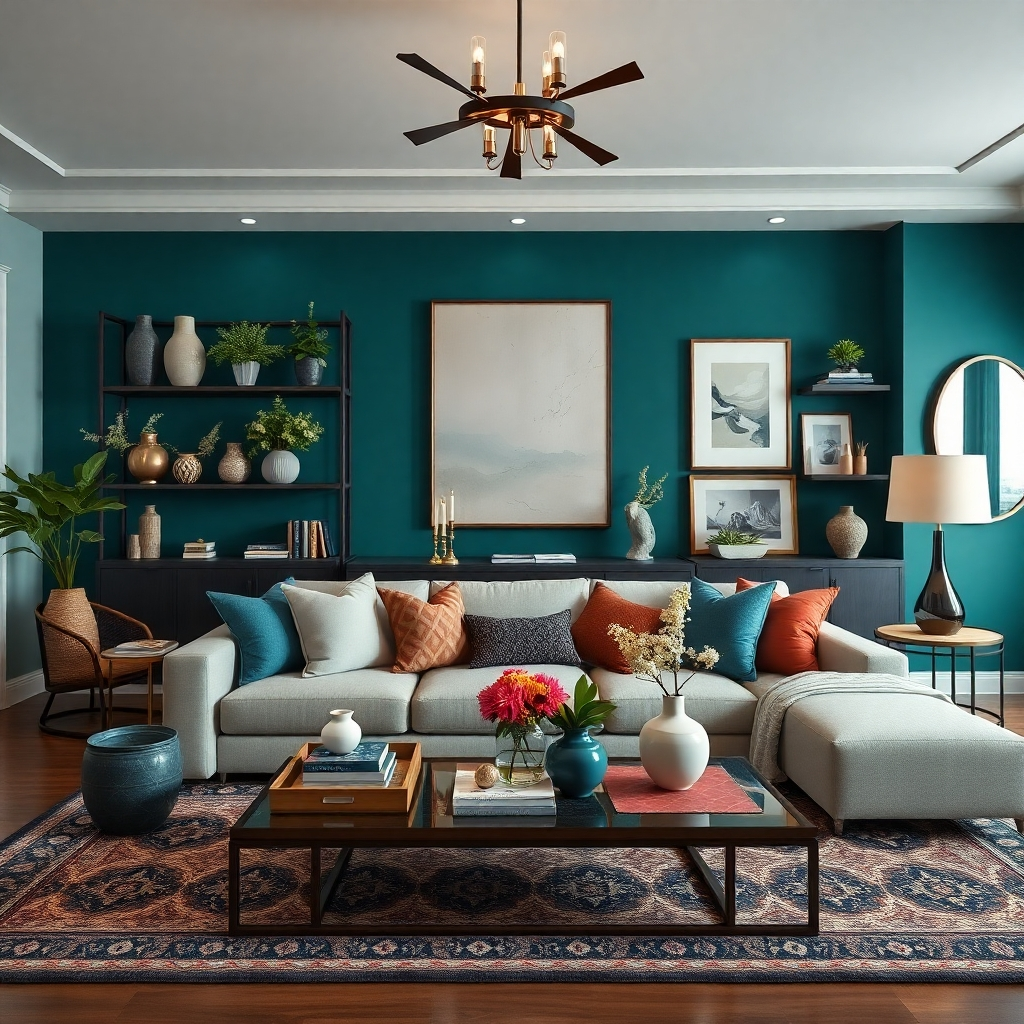
Accessories and decor play a key role in enhancing the living room’s style. They can add personality and warmth, making the space feel inviting. Here are effective ways to use innovative lighting, wall art, and plants for an appealing setup.
Innovative Lighting Solutions
Lighting can dramatically change a room’s atmosphere. Using different light sources, such as floor lamps, table lamps, or pendant lights, brings depth to the decor. Opt for lamps that have unique designs to serve as statement pieces.
Consider installing dimmable lights to adjust the brightness according to the mood. LED strips can also be placed behind furniture for a soft glow. This not only adds a modern touch but also enhances the room’s features.
Mixing various light types creates layers. A combination of ambient, task, and accent lighting ensures all corners of the room shine while highlighting decor elements effectively.
Wall Art and Hangings
Living Room Decor Ideas in incomplete without Wall art and hangings. Wall art is essential for personalizing the living room. It can be paintings, photographs, or even framed textiles. The choice of art should reflect individual taste and style.
Gallery walls are popular and can include a mix of different sizes and styles. Using cohesive colors across the pieces ties everything together. This approach adds visual interest without overwhelming the space.
Consider using floating shelves to display art, books, or personal mementos. Hanging mirrors can also create an illusion of space while reflecting light, making the room appear larger and brighter.
Decorative Plant Elements
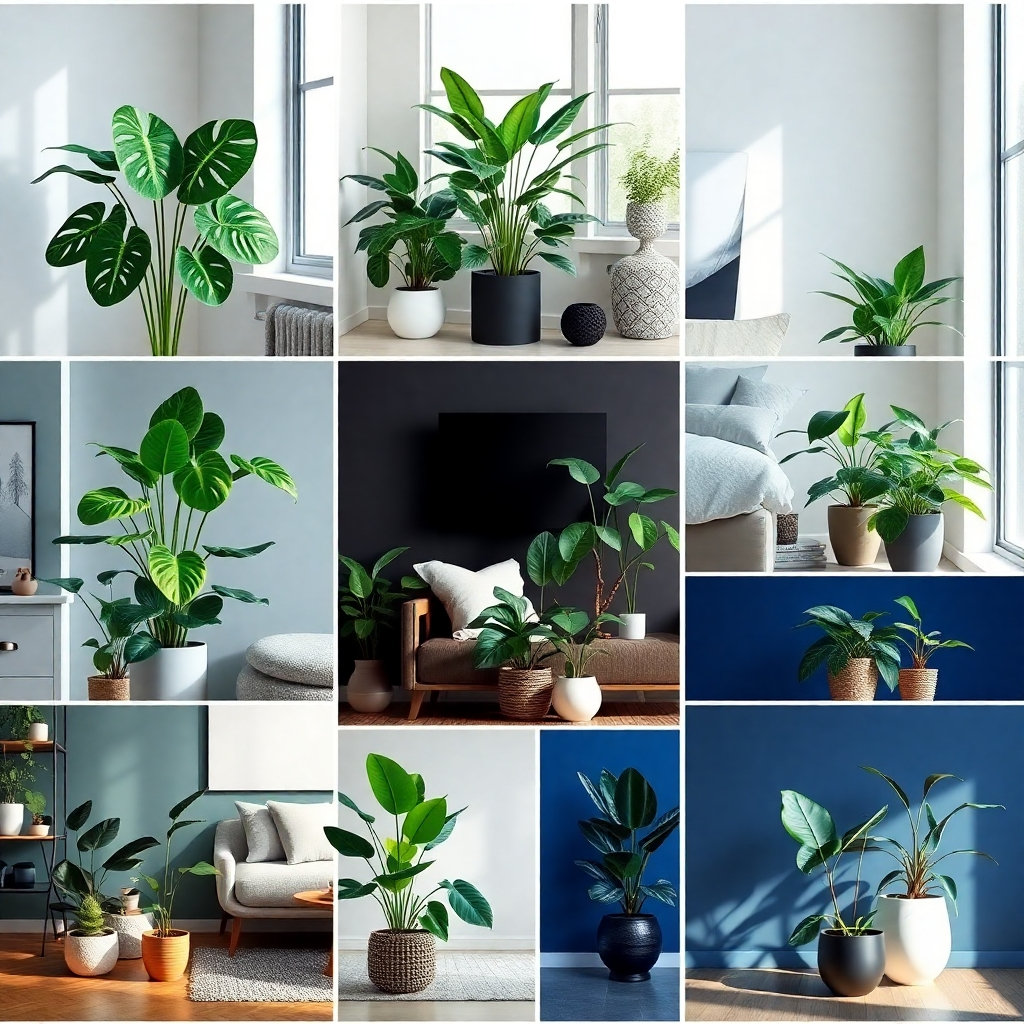
Plants add life to the living room. They can improve air quality and create a calming environment. Incorporating greenery is simple with options like potted plants, hanging planters, or a vertical garden.
Choose low-maintenance plants, such as snake plants or pothos. These plants thrive in various light conditions. Using decorative pots adds to the decor.
Arranging plants at different heights creates visual interest. Grouping smaller plants with larger ones can enhance the overall look. Introducing natural elements like wood or stone in plant displays adds texture and warmth to the living room.





